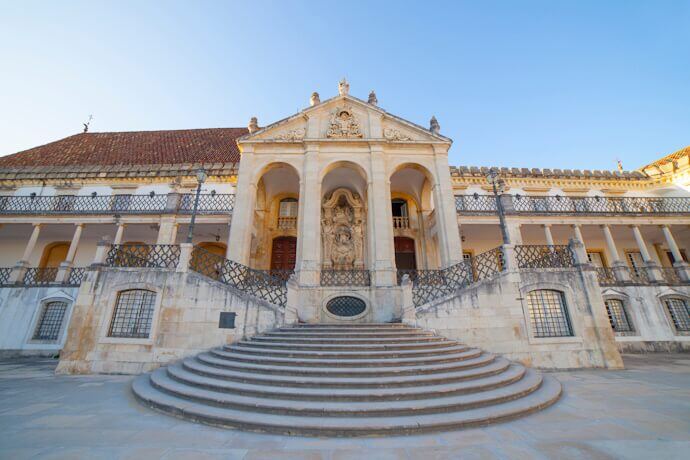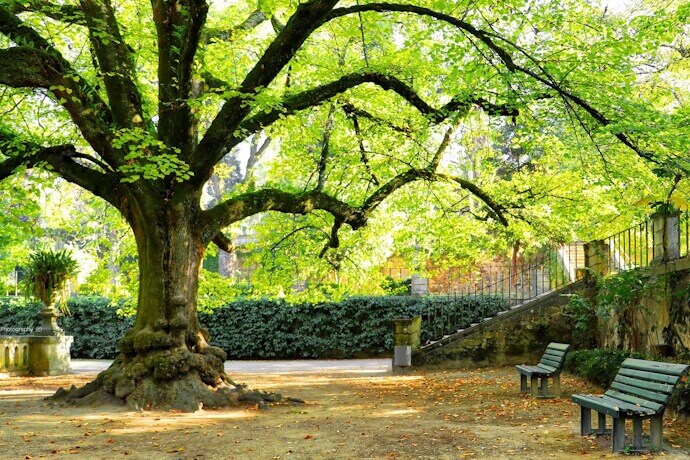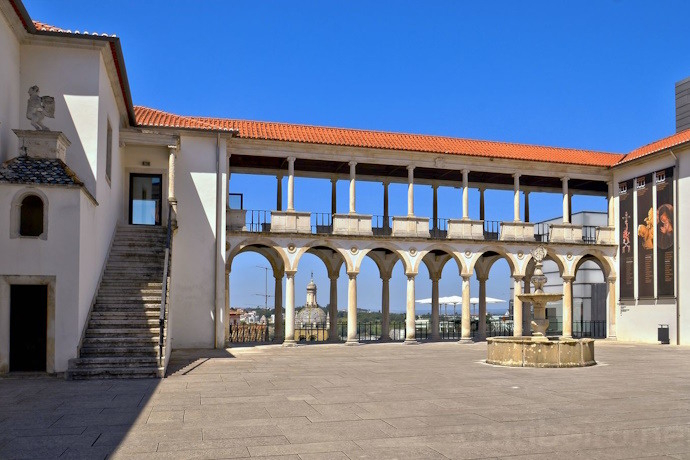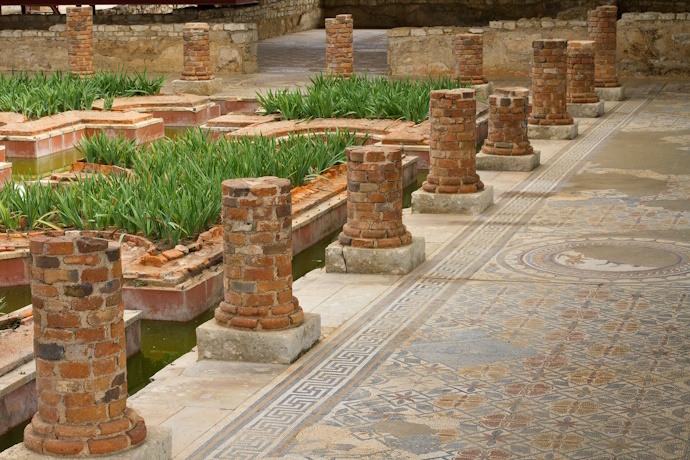Today, we invite you to embark on a journey to Coimbra, a city that once beat as the very heart of Portugal. Serving as the kingdom's capital until 1256, Coimbra was the cradle where the foundations of the nation’s culture, literature, and political thought were carefully laid.
Nestled along the tranquil banks of the Mondego River, in central Portugal, Coimbra's historic center is a blend of winding, cobblestone streets rich with centuries-old academic traditions and soulful melodies of fado music that echo through the night. Coimbra has been a beacon of learning for generations, home to one of Europe’s oldest universities and a proud UNESCO World Heritage Site.
Join us as we explore Coimbra, telling the story of Portugal’s rich history, reflected in its well-preserved Romanesque churches and medieval buildings.
The city of students and its Fado
Coimbra is often referred to as the "City of Students" due to the presence of the University of Coimbra, one of the oldest universities in Europe, founded in 1290. Perched high above the city, this UNESCO World Heritage Site stands as a beacon of academic excellence and tradition, highlighted by the iconic Baroque Joanina Library - renowned as one of the world's most stunning and ornately decorated libraries.
The university's historic halls and courtyards resonate with the footsteps of generations of scholars. At the same time, enduring traditions, such as the black-capped students, continue to define and enrich Coimbra's cultural identity. The university’s students play a significant role in the city’s life, especially during the Queima das Fitas (Burning of the Ribbons) festival, which marks the end of the academic year with parades, music, and revelry.
During this major event, Fado de Coimbra takes centre stage. Unlike the Lisbon style, which is often associated with themes of longing and melancholy, Fado de Coimbra is traditionally performed by male university students or alumni. Rooted deeply in the academic and cultural life of Coimbra, this genre of fado is characterized by its lyrical, poetic nature and often reflects themes of love, nostalgia, and student life. The songs are performed with a distinctive guitar style, featuring the Portuguese guitar—a twelve-stringed instrument that produces a unique, resonant sound.
Exploring the botanical gardens of Coimbra
Nestled within the grounds of the University of Coimbra, the Botanical Gardens are one of the oldest botanical institutions in Europe. Established in 1772, offer a serene and expansive retreat from the bustling city. Spanning over 13 hectares, the gardens feature beautifully landscaped areas, including lush greenhouses, vibrant flower beds, and tranquil ponds, all meticulously maintained to provide both educational and aesthetic experiences. You can explore thematic sections like the Mediterranean garden, the arboretum, and the historical garden, contributing to the garden's diverse botanical heritage.
The picturesque setting invites you to meander through shaded pathways, enjoy the seasonal blooms, and reflect on the serene water features. The gardens play a vital role in supporting the university's research and education in botany and environmental science, while also offering a picturesque escape for the public.
Sacred Heritage
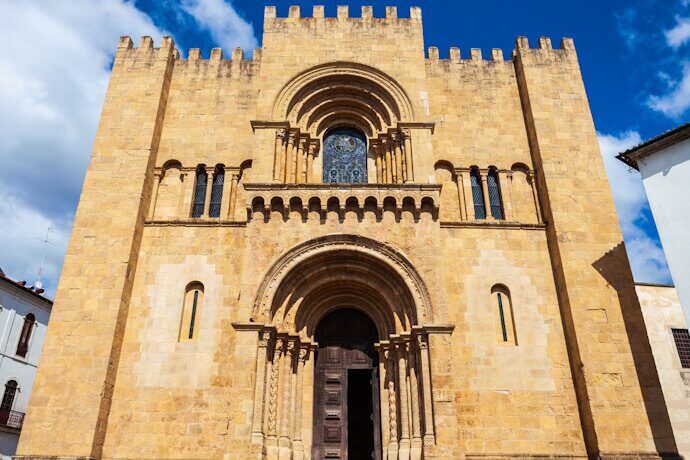
As you descend from the heights of the University of Coimbra, you will find yourself in the heart of the old town, where history takes on a more sacred form. Here, just a short walk away, stands the Old Cathedral (Sé Velha), a magnificent Romanesque structure that has withstood the test of time, guarding the stories and traditions of medieval Coimbra.
Dating back to the 12th century, its fortress-like appearance, with heavy stone walls and narrow windows, reflects the turbulent times in which it was built. Inside, the cathedral is equally impressive, with a richly decorated chancel and intricate altarpieces.
The heart of faith and tradition
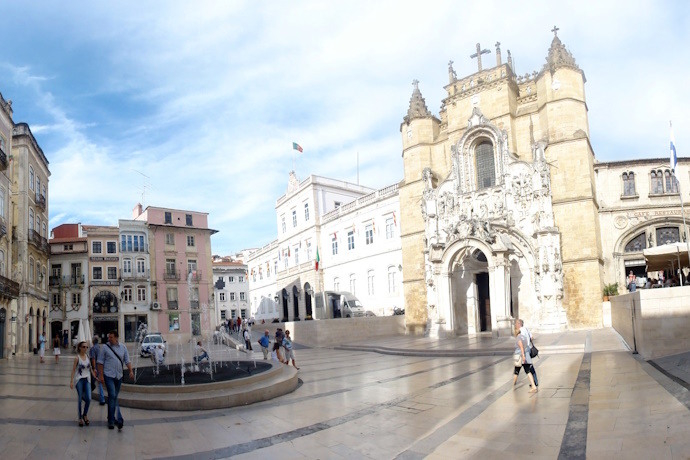
Journey towards another significant historical gem: the Monastery of Santa Cruz. Just a short stroll from the cathedral, this Monastery offers a deeper glimpse into the city’s spiritual and royal history, housing the tombs of Portugal’s first kings and showcasing exquisite Romanesque and Manueline artistry. The relics room, the stunning azulejos (traditional Portuguese tiles), and the beautiful cloisters make it a must-visit for history enthusiasts and those seeking to connect with the roots of Portuguese royalty.
Just a stone’s throw away from the monastery, you will find Café Santa Cruz, a historic café that once served as a chapel. Established in 1923, this café has retained much of its original ecclesiastical charm, with stained glass windows and high, vaulted ceilings. It is the perfect place to pause while enjoying a bica (Portuguese espresso) or a traditional pastry. The café is a beloved gathering spot for locals and visitors alike, where you can experience a blend of history, culture and the daily rhythms of Coimbra life.
Quinta das Lágrimas: a legend of love and sorrow
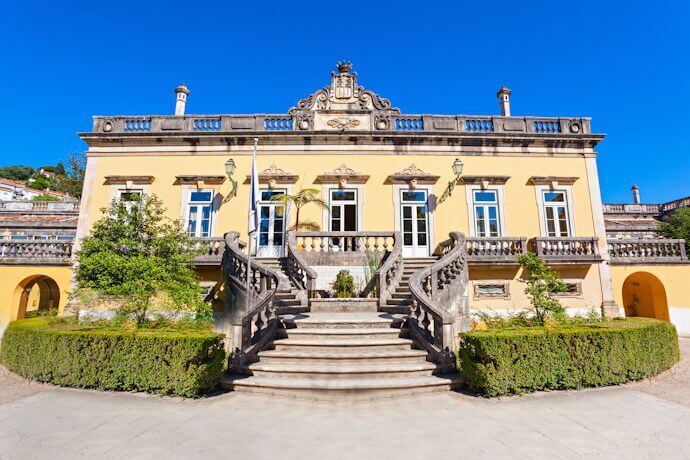
Across the Mondego River from the historic center lies Quinta das Lágrimas, a place forever linked to the tragic love story of King D. Pedro and his lover Inês de Castro. The estate’s beautiful gardens, which include the fabled Fountain of Tears, are steeped in legend and romance. As you walk through the grounds, you can almost hear the whispers of the past and feel the weight of the sorrow that once filled this place.
Today, Quinta das Lágrimas is a luxurious hotel, but its history and the legend of forbidden love continue to draw visitors from around the world. This enchanting estate provides a reflective pause, bridging the grandeur of Coimbra’s historical landmarks with the emotional depth of its legendary past.
The Santa Clara monasteries
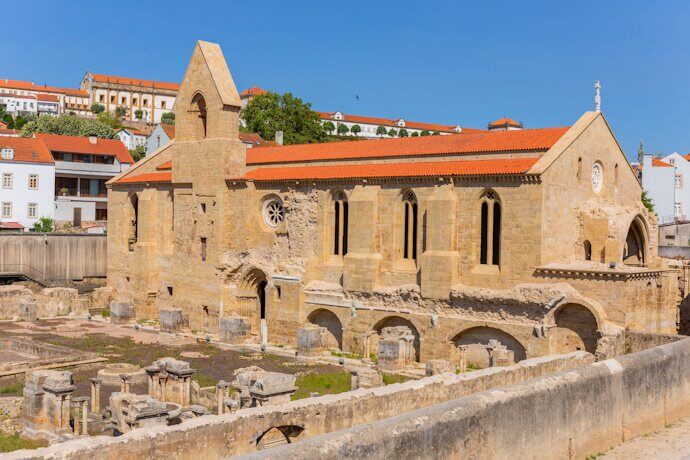
Leaving the romantic tranquility of Quinta das Lágrimas, a short journey takes you to the nearby Santa Clara Monasteries, where the spiritual and historical narrative of Coimbra continues. The Monasteries offer insight into the city's religious and architectural heritage.
The Monastery of Santa Clara-a-Velha, a gothic masterpiece that was partially submerged due to flooding, leaving behind an evocative ruin that speaks to the impermanence of even the grandest human achievements.
Nearby, the Monastery of Santa Clara-a-Nova was built to replace it, housing the tomb of the revered Queen Saint Isabel, known for her piety and acts of charity. Together, these monasteries offer a unique glimpse into the religious devotion and architectural evolution of Coimbra through the centuries.
Discover the art in Machado de Castro Museum
For a deeper dive into the city’s artistic and cultural heritage, the Museu Nacional Machado de Castro is an essential stop. Housed in a former bishop’s palace, the museum is named after Portugal’s most famous sculptor, Joaquim Machado de Castro.
It boasts an impressive collection of Roman artifacts, medieval sculptures and religious art, along with the incredible underground Roman cryptoporticus, a vast series of galleries and passageways dating back to the first century. This museum offers a journey through the layers of Coimbra’s rich history, from its Roman foundations to its artistic achievements.
Conímbriga: A Roman Time Capsule
Just a short drive from Coimbra, the ancient Roman city of Conímbriga is one of the best-preserved Roman sites in the country.
You can explore well-preserved ruins that include impressive mosaic floors, the remnants of grand villas, and the outlines of a once-bustling forum and bathhouses. The intricate mosaics, with their vivid patterns and mythological scenes, provide a fascinating insight into the artistic and everyday life of its former inhabitants, while the sprawling city layout reveals the sophistication of Roman urban planning.
A detour to Conímbriga enhances your understanding of Roman history, and enriches your experience of the region’s archaeological heritage. The site’s on-site museum showcases a variety of artifacts, from pottery and sculptures to tools and everyday items, further illuminating the daily lives of the ancient Romans.
A journey through Portugal's rich heritage
From the charming ruins of Conímbriga and the storied halls of the University of Coimbra to the poignant romance of Quinta das Lágrimas, every corner of Coimbra uncovers a new chapter of Portugal’s vibrant past and present. Experience this unique blend of academic tradition, historical landmarks, and cultural treasures that make Coimbra an unforgettable destination! Travel with us and immerse yourself in the unparalleled richness of Portugal’s heritage.


